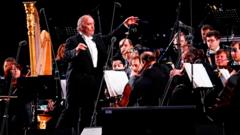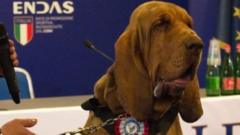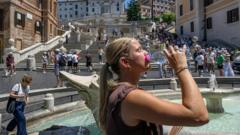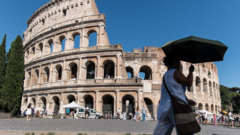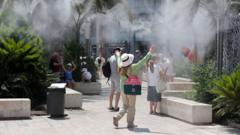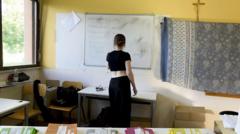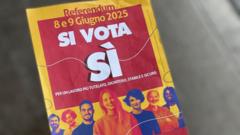Italian authorities dismantled a counterfeit art network, uncovering 2,100 forged artworks attributed to famous artists like Banksy among others.
Italy Uncovers Massive Art Forgery Operation, Seizing 2,100 Counterfeit Works

Italy Uncovers Massive Art Forgery Operation, Seizing 2,100 Counterfeit Works
A significant crackdown on a European art forgery network leads to millions in seized fakes.
The historic palazzo in Pisa has become an unlikely gallery this week, showcasing a staggering collection of artworks by renowned names such as Gustav Klimt, Salvador Dalí, and Andy Warhol. However, these celebrated pieces tell a very different story—every single artwork is a counterfeit.
Over the past year, Italy's specialized art theft unit has launched an extensive investigation, resulting in the seizure of more than 2,100 fake works and the dismantling of a Europe-wide network of forgers and dealers that sold these fraudulent pieces to unsuspecting buyers. According to Lorenzo Galizia, the head of the carabinieri art theft squad in Rome, this operation marks one of the largest busts of its kind in 15 years.
Angela Teresa Camelio, the prosecutor in Pisa handling the case, has estimated that the potential market value of the seized artworks stands at approximately 250 million euros, equivalent to $265 million. Among the myriad of forged works were pieces falsely attributed to the elusive street artist Banksy. Captain Galizia revealed that an entire exhibition in the central town of Cortona dedicated to Banksy was shut down after investigators determined that all the displayed works were indeed fakes. “There was nothing real there,” he stated, reflecting the absurdity of the situation.
The seizure included paintings, drawings, prints, and sculptures, leading to the investigation of 38 individuals suspected of conspiracy related to the dealings in illegal goods, as well as forgery and the sale of smuggled art. In a world where authenticity is highly valued, this massive bust underscores the ongoing challenges in the art market and the sophistication of criminal networks attempting to exploit buyers' trust.
Over the past year, Italy's specialized art theft unit has launched an extensive investigation, resulting in the seizure of more than 2,100 fake works and the dismantling of a Europe-wide network of forgers and dealers that sold these fraudulent pieces to unsuspecting buyers. According to Lorenzo Galizia, the head of the carabinieri art theft squad in Rome, this operation marks one of the largest busts of its kind in 15 years.
Angela Teresa Camelio, the prosecutor in Pisa handling the case, has estimated that the potential market value of the seized artworks stands at approximately 250 million euros, equivalent to $265 million. Among the myriad of forged works were pieces falsely attributed to the elusive street artist Banksy. Captain Galizia revealed that an entire exhibition in the central town of Cortona dedicated to Banksy was shut down after investigators determined that all the displayed works were indeed fakes. “There was nothing real there,” he stated, reflecting the absurdity of the situation.
The seizure included paintings, drawings, prints, and sculptures, leading to the investigation of 38 individuals suspected of conspiracy related to the dealings in illegal goods, as well as forgery and the sale of smuggled art. In a world where authenticity is highly valued, this massive bust underscores the ongoing challenges in the art market and the sophistication of criminal networks attempting to exploit buyers' trust.




